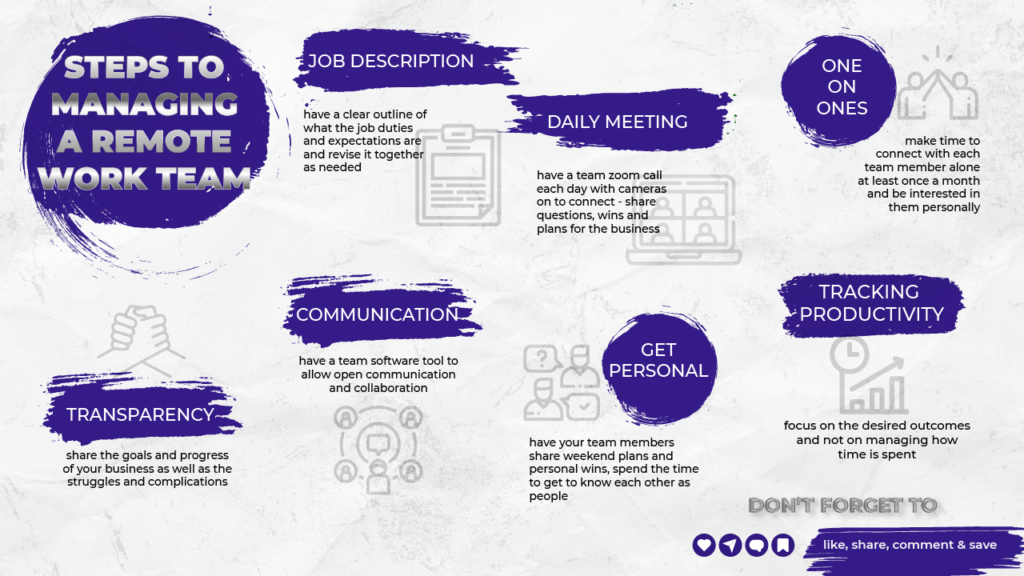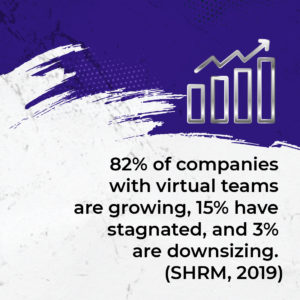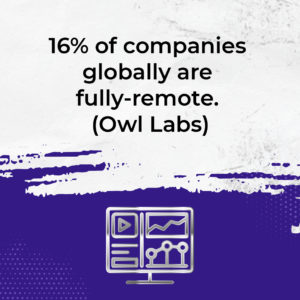Managing Teams Remotely – Processes to Help You Succeed!

Managing teams remotely can be difficult. Find out how these processes can help you be successful in managing a remote team!
Quick Links:
- TIP: How to manage teams remotely [Infographic Download]
- Episode Overview – Managing a Remote Team
- Personal Note from Jenn Neal on Managing Teams Remotely
- Episode audio [Podcast on Spotify]
- Blog Post – Managing Teams Remotely – How You Can Excel!
- Related Posts

TIP: How to manage teams remotely
Time needed: 7 minutes
TIP: Steps to managing a remote work team
- Job Description
have a clear outline of what the job duties and expectations are and revise it together as needed
- Daily Meeting
Have a team zoom call each day with cameras on to connect – share questions, wins and plans for the business
- One on Ones
Make time to connect with each team member alone at least once a month and be interested in them personally
- Transparency
Share the goals and progress of your business as well as the struggles and complications
- Communication
Have a team software tool to allow open communication and collaboration
- Get Personal
Have your team members share weekend plans and personal wins, spend the time to get to know each other as people
- Tracking Productivity
Focus on the desired outcomes and not on managing how time is spent


What’s In This Episode
It is absolutely essential to have your systems in place when managing a remote work team. I know first hand what happens when you don’t follow processes when working remotely. In this episode, I’m sharing some of the processes we use here at Formula Done that help our team work harmoniously throughout the globe. And in true Formula Done style, I’ll share with you an example of what happened within our team when we didn’t follow the system.

Jenn Neal on Managing Teams Remotely
Systems are essential when managing a remote work team. I’m sharing the processes we use as an example, along with a recent fail that happened to us when we didn’t follow the system.
-Jenn Neal


Managing Teams Remotely – Processes to Help You Succeed!
I want to share a little piece of wisdom I’ve recently gained. Managing teams remotely can be difficult if you do not have the right processes in place, or you do not stick to those processes. I’m a total process nerd. I love the creation process, but I’m not the strongest when it comes to implementing and sticking to them. And I really found out how important sticking to something even as simple as an onboarding process is when managing a remote team. Want to know a few great tips when managing a remote team? Let’s dive in!
Growing Our Team
So recently, our Formula Done team grew! And it was great… sort of! Don’t get me wrong, I have a great team. But I totally did NOT follow my onboarding process. And let me tell you… it was not the smartest move I’ve ever made.
About 9 months ago now, I brought on a new VA to help me with all the things. And about 3 months ago, I brought on someone to help with things for The Content Toolbox and some other social media stuff. And while I don’t regret hiring them, I do regret not following my onboarding process. Instead of going through my normal routine, with regular meetings, a job description, etc. I kind of just told them to do their thing and let them brave the fire. And they both winged it for a while, but let me tell you… jumping headfirst into flames is NOT for everyone.

Instead of learning the processes, and where things were and getting all of the details that they would have needed to work efficiently from the start, the process of learning took a LOT longer than it should have. In turn, not only did I spend more money letting them learn on their own than I should have, but it caused them frustration as well. And I don’t want to be that boss… EVER!
Please learn from my mistakes. Here’s how this process SHOULD have gone!
A Clear Job Description
The most important thing to do for a new employee, whether you’re managing a team remotely or in an office, is to give them a clear job description. You want to ensure that you have a clear and understandable description of what this person will be doing in your business. This is not only to help them understand their job but to let them know what you’re expecting of them.
It’s really easy to onboard a new employee and start giving them all of the things you need done. But in the process, not only will you lose track, but you’ll find that they in turn are overwhelmed. And the worst thing you can do with a new employee is overwhelm them, and let them be confused as to what they’re supposed to be doing.

Create a document that has the different tasks that your new employee will be asked to do and their descriptions. When you’re onboarding them, provide them with this document and review it with them. Clear expectations and understanding will make the process so much smoother. If they have questions about their assigned tasks, they’re able to ask and get clarification from the start. This will also open up the lines of communication… which brings me to the next part of my process.
Communication is Key
When managing a team in an office, you can walk up and talk to each other directly, face to face. There’s a level of personal interaction and connection to bond everyone together. Reaching that with a remote team is not so easy.

Communicating as a Team
My team is currently spread across the globe. We’re all in totally different time zones, so communicating is not always easy. To keep our team communicating fluidly, I ensure that we have daily team meetings and use Slack as a great communication tool.
Team meetings don’t have to be long, but it’s a great way to have your team connect and bond as if you were in an actual office. Though we are not a huge team, we enjoy the camaraderie that we share and it brings us all a little closer. The closer the bond between the team, the more fluidly we’re able to work together.
Our team also enjoys utilizing Slack. However, beware of mixed communication. If you like to utilize slack to keep your team communication open throughout the day, be sure that you have clear and specific channels. Keeping everything in one general channel will cause confusion and you’ll lose a lot of conversations. Create very specific channels and descriptions. Only communicate about certain things in each channel. Then all of your conversations are easily found and it’s frustration-free!

Communicating with Each Team Member
Keep in mind that you’re not only managing your team as a whole but managing each individual. Each person on your team is different and it’s important to ensure that they know that they can come to you with anything. You want to be sure that you’re giving each person everything they need to succeed at doing their job, and that if they’re missing something, they can openly ask you.
I personally like to do this by meeting with my new team members daily for the first month. They’re able to openly ask me questions, share their wins, and pick my brain for any information that may be of use to them. By the beginning of the third month, your employee should have a great relationship with you as well as all of the tools they need to do their job to their best ability.

More Tools to Manage Teams Remotely
There are so many other tools and processes out there that will help you manage a team remotely. The clearer your processes, the more effective and efficient your team will be. These are just 3 key processes that I find the most important for my business. For more about these processes, my onboarding fail this past year, and hear about a little secret I share of some upcoming goodies we’ll have for you here at Formula Done, click play up above and watch this episode on our YouTube channel! (Don’t forget to hit like and subscribe while you’re there!)
Related Posts
27 Best Practices For Managing Remote Teams In 2022
The ultimate manager’s guide to managing remote teams: 12 tips
13 Tips For Leading And Managing Remote Teams
Work Life Balance for Entrepreneurs and Why It’s SO Important
What is one system you can’t live without in your business?



